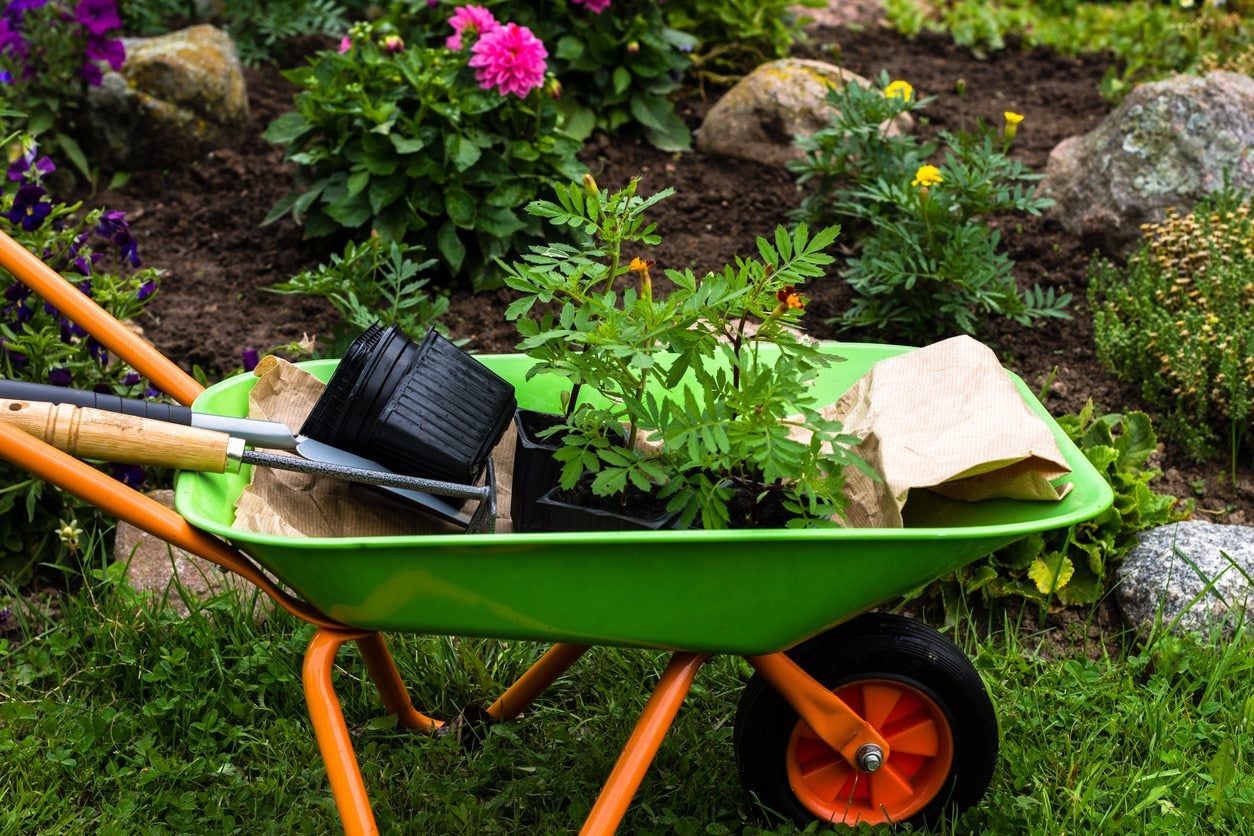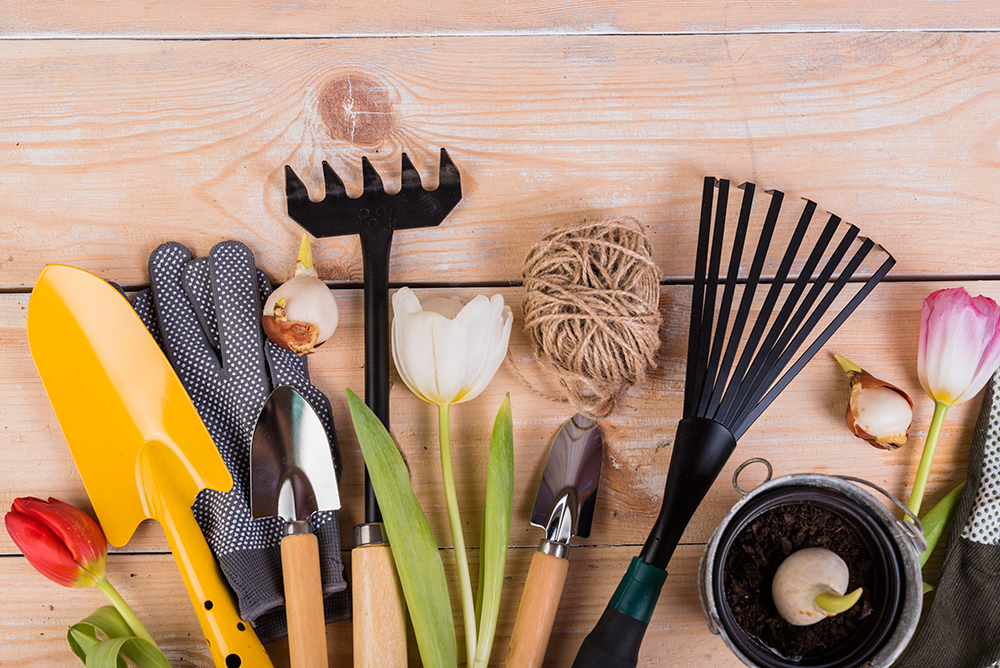blog
From Spades to Trowels: Understanding Gardening Tool Basics
Gardening can be one of the most rewarding hobbies, allowing you to create beautiful landscapes, grow your own food, and enjoy the outdoors. However, to achieve a successful garden, having the right tools is essential. From the simple spade to the versatile trowel, gardening tools help you complete tasks efficiently and effectively. In this article, we’ll break down the most essential gardening tools, explain their uses, and offer tips on how to choose the best ones for your gardening needs.
1. Spade
The spade is one of the most fundamental gardening tools that every gardener should have in their toolkit. With its flat, rectangular blade, it’s designed for digging, edging, and lifting soil. Spades are particularly useful for tasks like turning over soil, creating garden beds, or even edging your lawn. Their sturdy construction makes them ideal for breaking through compacted soil or cutting through roots and weeds. When choosing a spade, look for a model with a comfortable handle and a blade that’s strong enough to withstand heavy digging.

2. Trowel
A trowel is a small, handheld tool with a pointed, scoop-shaped blade that is indispensable for tasks requiring precision, such as planting flowers or small shrubs. It’s perfect for digging small holes, transplanting seedlings, or loosening soil around plants. Trowels come in various sizes, so you can choose one based on the scale of your gardening tasks. A good trowel should feel comfortable in your hand, and the blade should be durable enough to handle the soil conditions in your garden. Many gardeners prefer stainless steel trowels as they are resistant to rust and easy to clean. Whether you’re potting plants, digging for bulbs, or applying compost, a trowel is a must-have for precise and detailed work.
3. Fork
Garden forks, often referred to as digging forks or garden forks, are a versatile tool used for loosening and aerating soil, as well as for turning compost or removing weeds. Unlike a spade, which has a flat blade, a garden fork features several strong, pointed tines that can penetrate the soil more easily, making it ideal for breaking up compacted dirt. Garden forks are especially useful in areas where the soil is heavy and dense, such as clay-based soil. They also make great tools for mixing in organic matter like compost or mulch.
Garden forks can also be used for dividing perennials, which involves digging up and separating root clumps. When shopping for a garden fork, make sure the tines are strong and the handle is made of durable wood or metal for longevity. Additionally, a comfortable, ergonomically designed handle can make your gardening tasks easier and reduce hand strain.
4. Hoe
A hoe is a gardening tool with a long handle and a flat blade, used for chopping, digging, and weeding. Hoes are particularly effective for cultivating soil, creating furrows for planting seeds, and breaking up surface weeds. There are different types of hoes, such as the traditional draw hoe, which is pulled toward you to create shallow trenches, and the scuffle hoe, which is pushed back and forth to control weeds just below the soil’s surface.
In addition to weeding, hoes can also be used for trenching or creating rows for planting seeds and crops. If you have a larger garden or are looking to plant vegetables, a hoe will help speed up the process of preparing soil. When choosing a hoe, consider the type of soil you will be working with, as some hoes are better suited for softer soils, while others can handle tougher, more compact ground.
5. Pruners
Pruners, also known as secateurs or hand pruners, are essential for maintaining the health and appearance of your plants. These tools are designed for trimming and cutting branches, stems, and foliage with precision. Pruners come in several types, such as bypass pruners, anvil pruners, and ratchet pruners, each suited for different tasks.
- Bypass pruners have two sharp blades that pass each other like scissors, making them ideal for cutting live stems and branches. They produce a clean, smooth cut, reducing the risk of damaging the plant.
- Anvil pruners have one sharp blade that comes down onto a flat surface, similar to an anvil. These are best suited for cutting dead wood or thicker, harder branches.
- Ratchet pruners feature a ratcheting mechanism that allows you to cut through tougher branches with less effort, making them a good choice for gardeners with limited hand strength.
Pruners are essential for tasks such as deadheading flowers, trimming hedges, and cutting back overgrown plants. When choosing pruners, consider the size and comfort of the handles, as well as the blade quality. A good pair of pruners will make your gardening tasks more efficient, and sharp, high-quality blades will ensure that your plants are cut cleanly and without damage.
6. Watering Can
A watering can is an essential tool for keeping your plants hydrated, especially if you don’t have access to an automatic irrigation system. Available in various sizes and materials, watering cans are designed for easy, controlled watering. A basic watering can typically has a handle, spout, and a removable rose (the head through which the water flows), which controls the flow of water to prevent over-watering or damaging delicate plants.
For small gardens, a traditional watering can with a smaller spout might be sufficient. Larger gardens may benefit from a watering can with a long spout, which can reach into garden beds or containers without having to move the entire can. Some models also feature a detachable spout that can be adjusted for different watering needs. For plants that require gentle watering, such as newly-planted seeds, choose a watering can with a fine spray. If you’re looking to reduce water waste, consider investing in a watering can with a larger capacity, as it can help reduce the need for frequent refills.
7. Wheelbarrow
A wheelbarrow is a fantastic tool for transporting soil, plants, mulch, and other materials around your garden. It helps make heavy-duty tasks much easier by providing a sturdy container that can be wheeled around, reducing strain on your back and arms. Whether you’re hauling compost to garden beds, moving potted plants, or collecting debris, a wheelbarrow can save you time and effort.
When choosing a wheelbarrow, look for one with a durable, corrosion-resistant frame. Steel frames are sturdy, while plastic or fiberglass models are lightweight and easier to maneuver. Additionally, consider the size and weight capacity of the wheelbarrow. Larger wheelbarrows are useful for big jobs, but smaller models may be more convenient for maneuvering around tight garden spaces. For comfort, check for a padded handle and wide, stable wheels, which provide better balance and ease of use on uneven terrain.

8. Rake
Rakes are incredibly versatile tools that come in various forms to suit different gardening tasks. The most common type is the leaf rake, which has a wide, fan-shaped head designed to gather leaves, grass clippings, and other debris. Rakes are useful for clearing garden beds, lawn areas, and patios, as well as for spreading mulch and soil.
For tasks like leveling soil or creating garden rows, a landscape rake or soil rake may be more suitable. These rakes feature sturdy, closely-spaced tines that can efficiently spread soil or other materials evenly across the ground. A hand rake, on the other hand, is a smaller, more lightweight tool that’s perfect for clearing debris in tight spaces or around delicate plants.
When choosing a rake, consider the material of the rake head and the handle. Metal rakes are durable and long-lasting, while plastic rakes are lighter and more comfortable to use. Look for a rake with adjustable tines to help you manage different tasks, from collecting leaves to leveling soil for seed planting.
9. Garden Kneeler and Seat
A garden kneeler and seat is a practical tool for gardeners who need to bend or kneel while working on the ground. These dual-purpose tools provide a cushioned surface to kneel on when planting, weeding, or pruning. They can also be converted into a seat, offering a comfortable place to rest when needed.
Garden kneelers and seats often come with a sturdy frame, and some models even feature pockets or trays for storing gardening tools. A kneeler can significantly reduce strain on your knees and back, allowing you to work for longer periods without discomfort. Look for a model that is lightweight, foldable, and easy to carry, especially if you need to move it around your garden frequently.
10. Garden Gloves
Though not technically a tool, garden gloves are an essential item for protecting your hands from dirt, sharp objects, and rough materials while gardening. Whether you’re digging, pruning, or handling chemicals, garden gloves help keep your hands safe and clean. Gloves come in various materials, including leather, cotton, and rubber, each suited to different tasks.
For general gardening, lightweight cotton gloves are breathable and comfortable for light tasks like weeding or planting. For tasks that require more durability, such as pruning thorny plants or handling rough soil, opt for thicker leather or rubber gloves. Ensure the gloves fit properly to avoid discomfort while working. Look for gloves with reinforced fingertips or palms for added protection, especially when dealing with sharp objects or tools.

Conclusion
From spades to trowels, gardening tools are the foundation of any successful gardening project. By understanding the basics of each tool and choosing the right one for your specific needs, you can ensure that your gardening tasks are completed more efficiently and comfortably. With the right tools in your gardening arsenal, you can cultivate healthy plants, maintain beautiful landscapes, and enjoy the therapeutic benefits of spending time outdoors. Whether you’re a seasoned gardener or just starting out, investing in high-quality gardening tools will make your gardening experience that much more rewarding.


